Imagine that was the whole analysis.
Anyway, we haven’t done a costume analysis in a while, and you guys seem to love those! My personal favorite was Challengers, but I think yours was Saltburn. However, what all the movies I’ve written about have in common is how integral the costumes are to the storytelling. Often in ways that aren’t so obvious right away, but always feel very intentional and correct. Anora is no different.
Also! Your routine reminder that I am a fashion writer and not a movie critic— this is an analysis!!! Still, spoilers ahead and if you would like to discuss the actual movie plz hmu, because Sean Baker, you will always be famous, but you’re also kind of weird as hell!
Anora follows Anora “Ani” Mikheeva, a young stripper living in Brighton Beach, who meets Ivan “Vanya” Zakharov, the sun of Russian oligarchs. After their introduction at Headquarters, the club she works at, Ani’s life becomes a Cinderella story rooted in the American dream, after her and Vanya’s week together ends with a marriage in Las Vegas. Upon hearing the wonderful news, Vanya’s parents are furious and send their goons to fix the situation and to get the marriage annulled. Vanya is told that his time in American is over and his parents will be coming to pick him up so he can start working for his father’s business in Russia— green card wedding denied. Naturally, he runs away, leaving Ani to fend for herself amongst the henchmen as they work together to track Vanya down. Once they find out that he’s on a bender and getting a private dance from a rival stripper at Headquarters they drag him to city hall, barely conscious, and wait till morning to be seen by the judge and to get the annulment. But that would be too easy! They can’t get an annulment in New York because they were married in Vegas, so when mommy and daddy pull up, mommy demands they all fly to Vegas, where an annulment is finally received. This whole time Ani is fighting to save their marriage until she finally realizes that this dysfunctional family and their bitch ass son are not worth it at all.
So! Now that we’re all on the same page, let's look at the world Jocelyn Pierce created through her costume design. In a conversation with Cultured, Pierce mentioned how she wanted the wardrobe to feel aspirational, focusing on this idea of “the American Dream.” She started by looking at magazines and combined those glossy images with the real life wardrobe of people actually living in Brighton Beach. Perhaps it’s growing up with the city in my backyard and knowing my way around New York better than I do in the city I grew up in or also having a Slavic upbringing, but every single character felt like someone I’d seen before. These were not perceived ideas of Brooklyn, but ones you’d see if you stepped out onto the streets right now.
In normal Sean Baker fashion, many extras in the club scenes worked as actual dancers there, so their wardrobe was largely their own. Pierce and Baker really considered what the girls had to say, not only when it came to their performance wear, but also the ways in which they leave the club. You’ll notice that Ani goes home from work in the baggiest of sweats and Uggs. Sure, comfort is nice after a long shift, but the dancers also mentioned how this uniform really becomes a disguise as to not be recognized from the club. They understand the situational use of their performance wear and its perception when out of its normal context.
Now, let’s focus on Ani. Tinsel hair, bejeweled butterfly nails, an embroidered purse, face gems. She sparkles. A sparkly, almost ethereal figure—a fantasy that taps into cultural iconography associated with innocence and sexual allure. That, along with her easy access, zip up dresses, school girl outfits, and bow motif thigh tattoos, shows someone who understands the fantasy she’s creating for men, but also perhaps the one she’s imagining for herself as well. As Joanne Entwistle argues in The Fashioned Body, “cultural identities, fantasies, and self-projections are mediated by dress." Ani's choices reveal how she constructs an identity both for external consumption and internal validation. She creates a paradoxical image of vulnerability and agency, inviting attention but controlling the terms of its presentation. The bow motif on her thighs particularly nods to a “gift-wrapped” persona—a self-aware yet performative interpretation of femininity that she offers to the world. Her image oscillates between the performative and the personal, where the fantasy crafted for others bleeds into the one she holds for herself, so much so that can it can sometimes be difficult to distinguish the two.
Additionally, Ani's costumes can be seen as a form of armor that allow her to perform power and allure while protecting herself in vulnerable spaces. According to The Fashion System, garments can "speak to unspoken desires," and Ani's mix of seductive and aspirational clothing communicates both her ambitions and her defense mechanisms. Her bold and shiny looks shield her from the world even as they lure it in, merging eroticism with the iconic, glossy allure associated with the American Dream.
When she first pays a visit to Vanya’s mansion, she wears a striking blue Hervé Léger dress. Pierce has pointed out that Ani’s blue dress against the white walls and red silk sheets serendipitously nodded to that idea of the American Dream, which is often defined by material success, social mobility, and personal freedom. The Hervé Léger bandage dress is also a classic staple of the 90s and early 2000s, especially when we look at the club scene. Ani is only 23 and while she is an adult by definition, she is still so young and aspiring to adulthood. For Ani, this dress might represent a grown-up fashion she idealized in her younger years, scrolling through Tumblr, as it was iconic in shaping images of femininity that were powerful yet highly sexualized. The addition of the black puffer she wears with it adds a bit more grounded realism to the look, aligning with New York City streetwear culture, while also contrasting the ways the wealthy often don’t have to wear heavy coats. They don’t have to deal with outside weather conditions or long subway journeys, because they have personal cars that pick them up and drop them off right in front of the door. The dress’ idealized glamour is balanced by the coats gritty reality.
Her wedding outfit of a nude corset, denim shorts, and heels doesn’t feel intentionally bridal at all, and yet there is still a vulnerability and innocence there. This bareness creates a sense of honesty, but without the structured polish expected of traditional wedding attire. Taking the formality out of the occasion can also hint at the fact that perhaps this union is as fragile and as transparent as the layers she wears. Also, while we’re on the topic of vulnerability, Ani only wearing a t-shirt and underwear when the goons arrive at Vanya’s mansion, looking visibly uncomfortable in a room full of just men, shows the difference between choosing to take your clothes off and being forced to do so. Here, Ani is defenseless not only physically but symbolically, embodying the uncomfortable line between voluntary exposure and forced vulnerability. Neither of which is an invitation for anything.
This is followed by an all black outfit. Leather pants, platform heels, Russian stable fur, and all! It shows a return to her power, projecting a controlled, confident image as she sets out to find her husband. This fur not only captures both Ani and Vanya’s Russian heritage, but also touches on the idea of the American Dream once again. For many immigrants owning a fur is a sign of success— it’s incredibly aspirational. It symbolizes traditional power and a luxurious status often idealized in American fashion as the epitome of old-world elegance and wealth. This “mob wife” look, if you will, feels purposefully cinematic, evoking the stylish, composed demeanor of a wife with agency in classic narratives, but with a distinctly contemporary edge. This outfit is also accompanied by one of the most significant costume choices in the entire movie, at least in my opinion.
The red scarf.
First it gags her, then it gives her warmth, and finally it sets her free. Starting as a symbol of danger, the scarf is used by the goons to tie her up, and then later is offered to her as a way to keep warm on the windy boardwalk and marks her resilience. As it billows in the wind, never quite finding stability, always feeling out of place. Then as Ani leaves the marriage services office, after signing her annulment papers, Vanya’s mother questions whether that is in fact her scarf, to which Ani throws it at her along with the fur coat. The red is no longer a symbol of danger, but a symbol of power. One that Vanya’s mother and her Van Cleef necklace have nothing on. Also, just quickly on that necklace: very smart to put that on a woman who is dumb rich and understands its social and cultural capital, while also not going with an obvious piece from the Alhambra collection.
I did want to touch on Vanya just a bit as well.
I know that here in American we often associate the upper class and old money with “stealth wealth” and “quiet luxury” but that would not translate the same way in Europe. Even amongst Russian oligarchs, a logo is still a sign of wealth. Personally, my family in Poland goes insane over a Polo Ralph Lauren or Lacoste logo, lmao. So, I think seeing Vanya in things like Gucci sweats and a Versace robe is very smart. He’s also only 21, and while he has been raised in an environment that requires you understand specific codes and symbols, he’s also an iPad baby for sure, you know? I don’t know how far back his family money goes, but for him, it’s inherited. Furthermore, incorporating Russian designers and niche, small NYC labels into his wardrobe alongside the luxury brands is what made his wardrobe feel more personal and realistic.
Again, adult by definition, but very childish. He clearly suffers from Peter Pan syndrome and never wants to grow up or take on adult responsibilities, because, realistically, he’s never had to. When he’s finally forced to face the repercussions of his adult decisions, he runs. This recklessness is represented in his clothing when we look at things like his graffiti sweatshirt, custom chains, and leopard print shirt, as well as the basketball shorts he wears with a blazer to get married. His social and cultural status also doesn’t really require him to “perform” as much when it comes to a persona. In a way, Vanya's style allows him to be both the privileged man-child and the bold nonconformist, reinforcing his social position, where he can flaunt luxury without the need to perform maturity.
The only time I felt like we were seeing Vanya very intentionally try to embody a specific image was during his New Year’s Eve party. His sparkly suit might have been designed by Russian designer Roma Uvarov, but it was paired with Chelsea boots that had golden spurs. That along with his yellow sunglasses and coiffed hair couldn’t help but make me think about Elvis Presley. It felt like an obvious interpretation of American culture through a European lens. It’s filled with bravado but also kind of hinting at a parody of “Americana.”
So, that was A Slavic Cinderella Story, and I will be watching again! The Substance coming next.

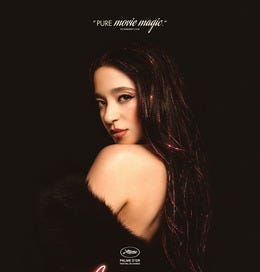



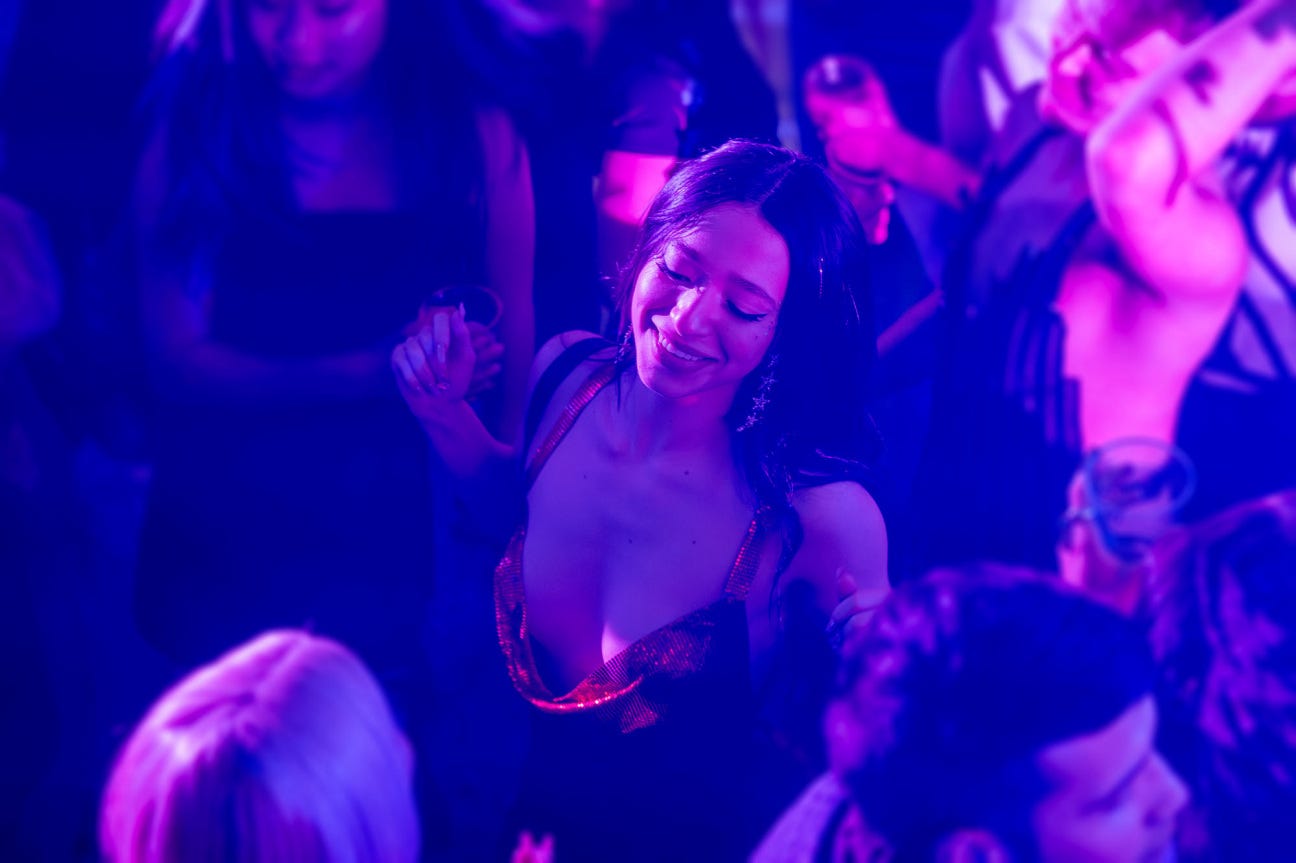

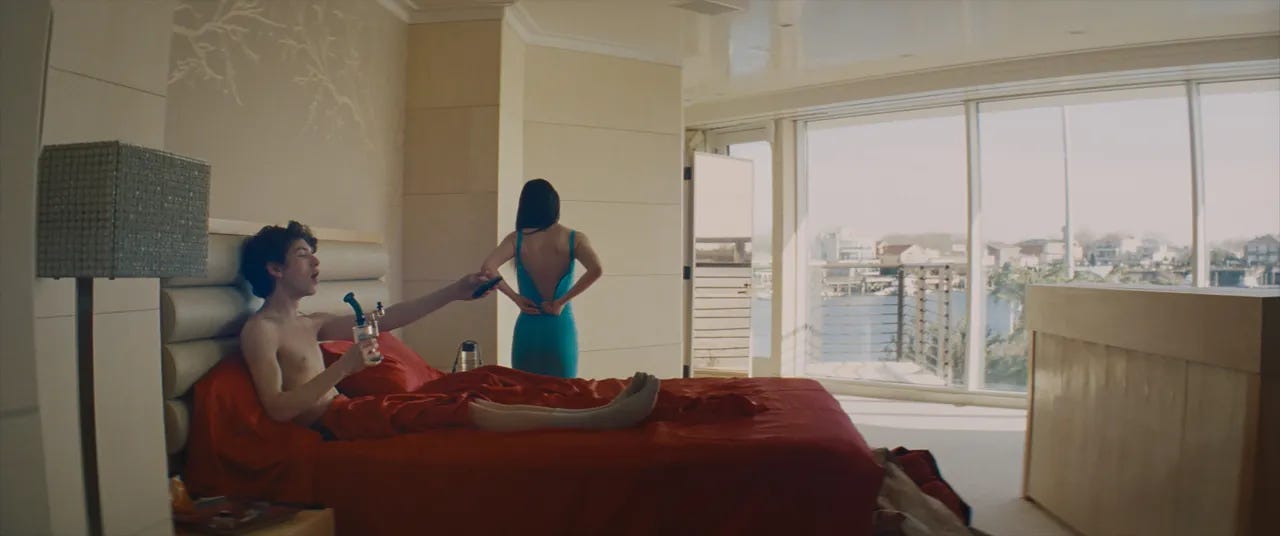



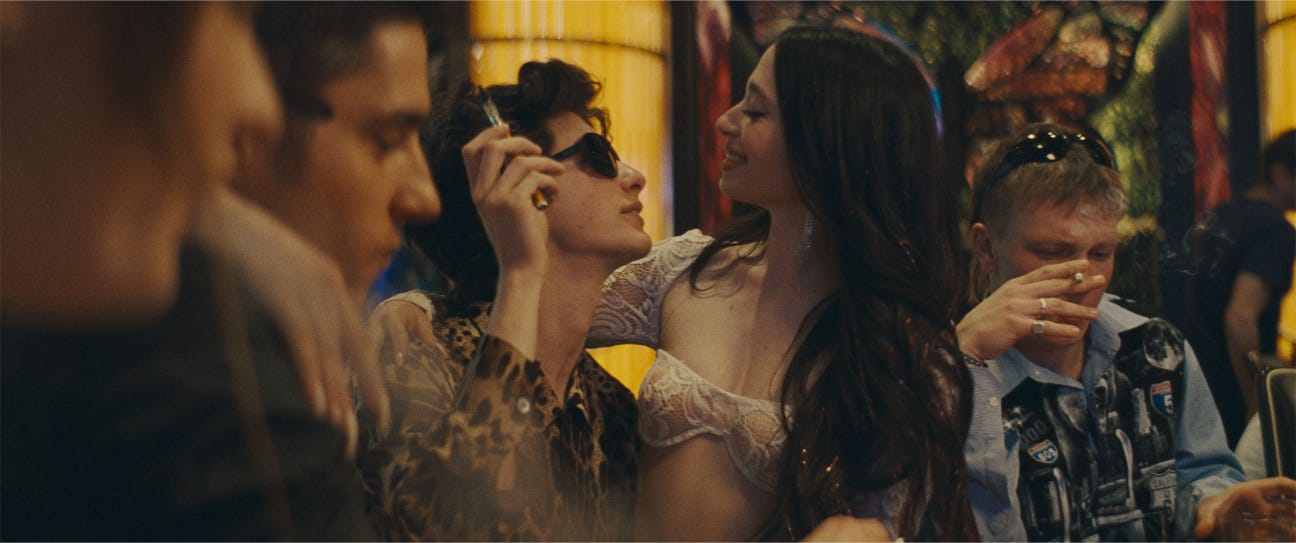
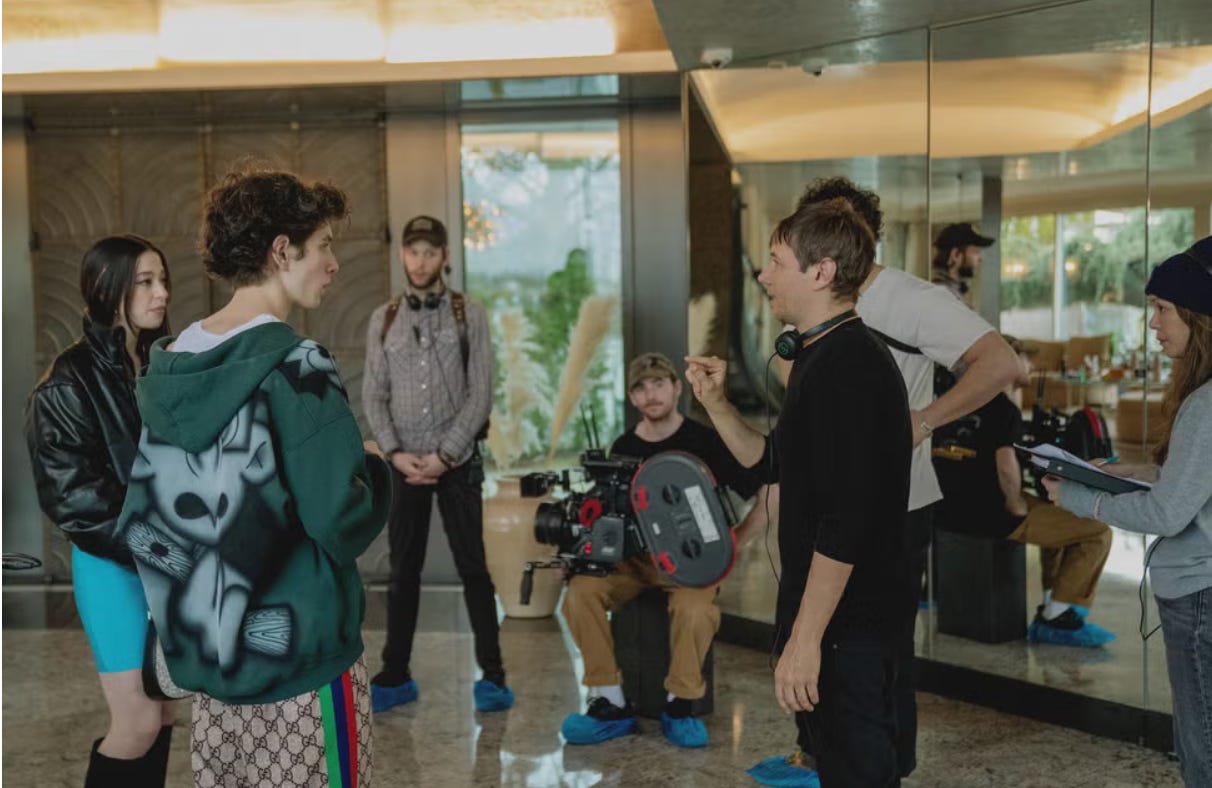
Thank you! Igor's outfit seems to be a reference to the cult Russian film "Brother 2", filmed on Brighton Beach
One of the first interpretations I had for the bright blue dress she wears in the moment she first steps in Vanya’s world was Cinderella, mainly because in the fairytale the dress she wears the moment she first steps in the prince’s world is also blue. Also, there’s a moment in the club Ani says she wants to go to Disney and in a Cinderella suit for her honeymoon.